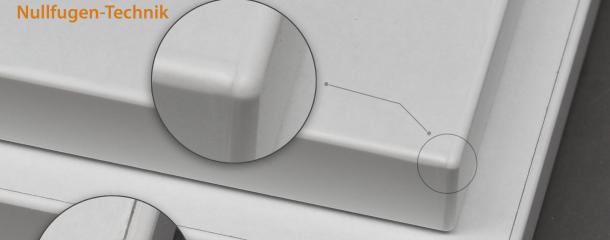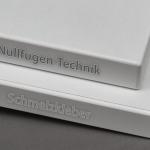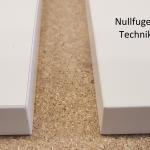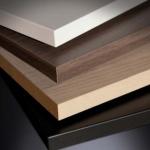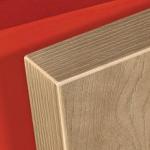Nulová spára
Záznam uvidíte za
       The zero joint, what is it?At edgebanding, the term zero joint refers to a processing result in which the joint between the panel surface and the edge material is not visible to the mere eye. A generally applicable standard for the zero joint does not yet exist (as of August 2020), but there is an unofficial technical method for the evidence of the zero joint, which is referred to as the graphite test. In this test, graphite powder is spread on the plate and rubbed over the joint. If no joint appears after rubbing, the test is passed. For the furniture user, this means that the joint does not collect dirt in everyday use and remains invisible. The first patent for zero joint bonding was registered in 2001 for the kitchen manufacturer Bulthaup, which had developed the laser process in collaboration with the edge manufacturer Rehau and the machine manufacturer IMA. However, laser technology did not reach market maturity until eight years later. At the trade fair LIGNA 2009, IMA presented its first production-ready machine with CO2 laser and HOMAG the first production-ready machine with diode laser. Since then, further technical methods have been developed for industrial and craft manufacturing. Zero joint technologies explained in an understandable waychapter 1: mode of operation chapter 2: edge band material chapter 3: functional layer chapter 4: overview zero joint technologies chapter 5: laser technology chapter 6: hot air technology chapter 7: near infrared technology chapter 8: microwave technology chapter 9: plasma technology chapter 10: hydrogen technology chapter 11: conditions for a successful zero joint chapter 12: zero joint technology for craftsmen chapter 13: zero joint, a critical view |
CNC obrábění893
Opracování hran631
Pílení441
Hoblování187
Frézování180
Vrtání, Dlabání135
Lisování, Spájení200
Broušení321
Dopravníky, Skladování, Balení203
Povrchová úprava152
Výrobní linky127
Topení, Sušení, Drcení60
Odsávání, Stlačený vzduch, Vakuum134
Technika montáže, pracovní stoly16
Soustružení29
Nástroje, Ostřeší94
Ostatní, Příslušenství138

